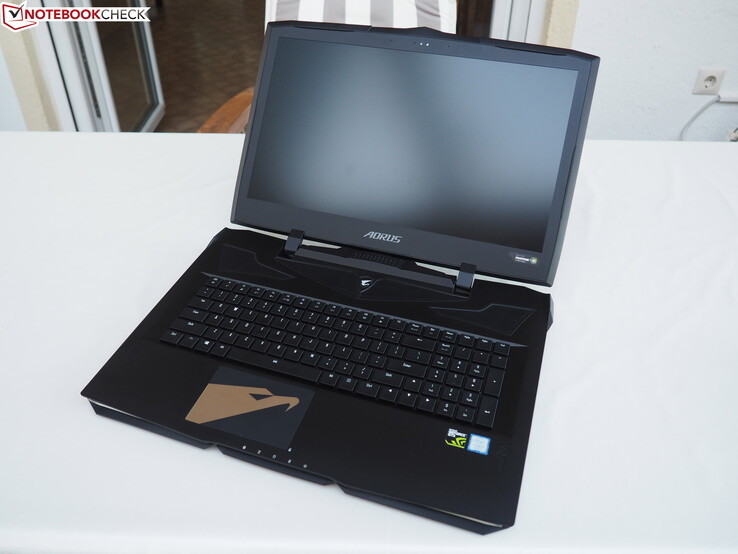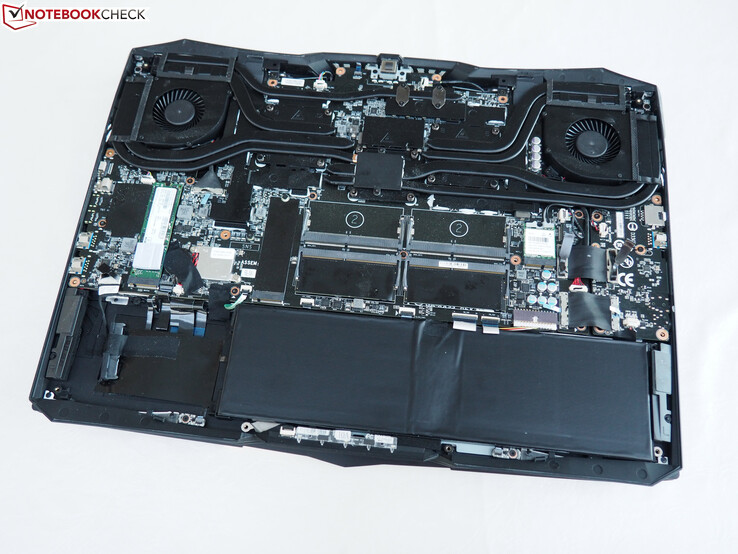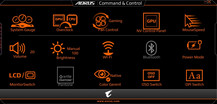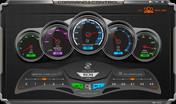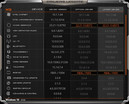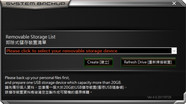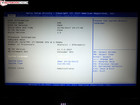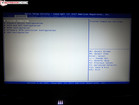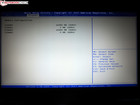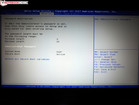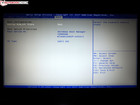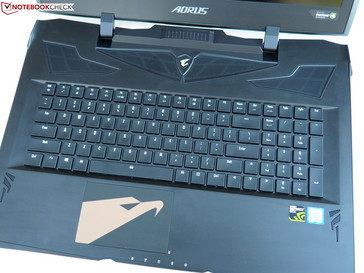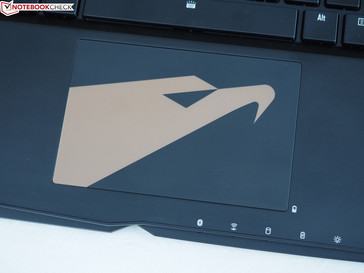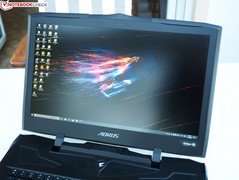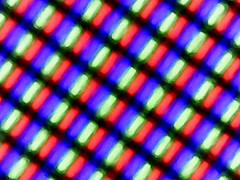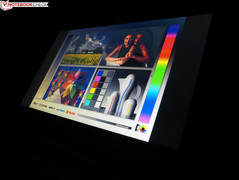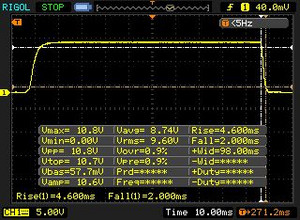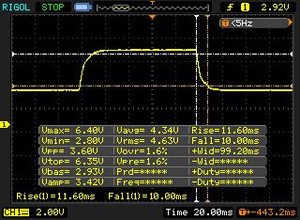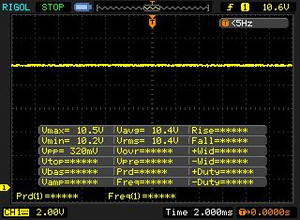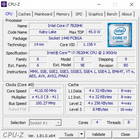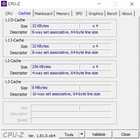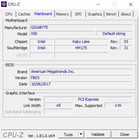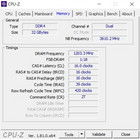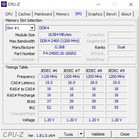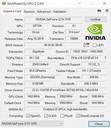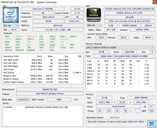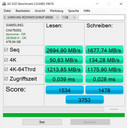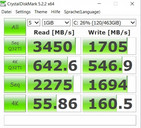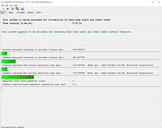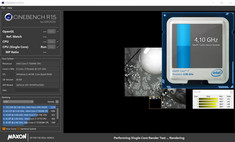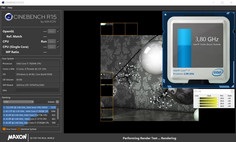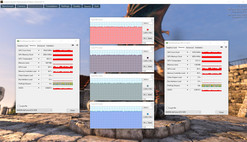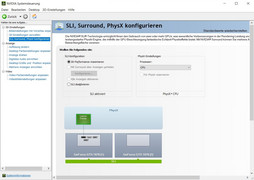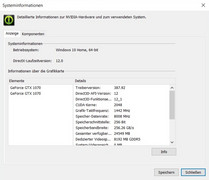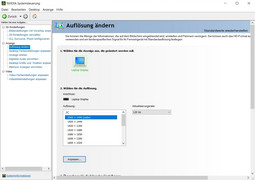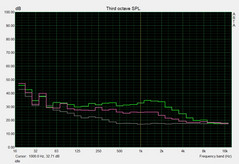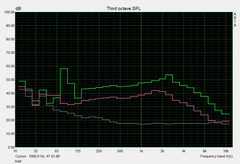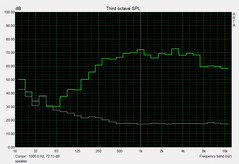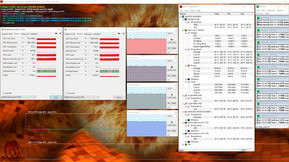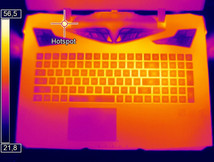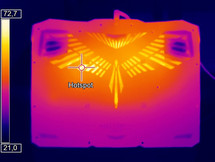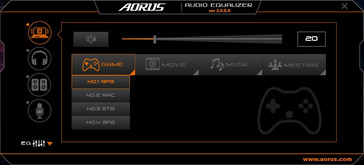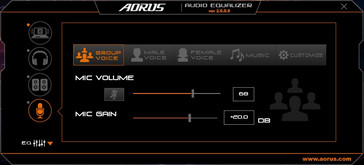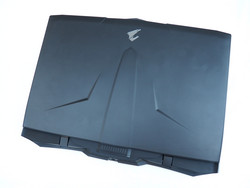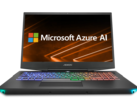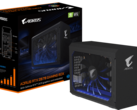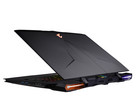Aorus X9 (i7-7820HK, GTX 1070 SLI, QHD) Laptop Review

For the original German review, click here.
After the X3, the X5 and the X7, Gigabyte has now presented its latest high-end laptop, the X9. This is supposed to stand out with its slim exterior and plenty of power inside. While the 13 - 17-inch siblings (some of which are significantly cheaper) have to make do with a classic Single-GPU, the X9 is powered by two Nvidia chips. Usually, the GeForce GTX 1080 is the limit for any gaming device, but a double pack of GeForce GTX 1070s promises to lift the device into significantly higher levels of performance.
In order for the Dual-GPU system to reach its full potential, the device is equipped with an Intel Core i7-7820HK processor that can optionally be overclocked to up to 4.3 GHz. The X9 also has other great features. For example, our test configuration is equipped with 32 GB of DDR4 RAM (2x 16 GB @ 2400 MHz) and a 512 GB M.2 SSD.
The package is completed by a matte QHD display that has a resolution of 2560x1440 pixels and supports 120 Hz. According to Gigabyte, the Aorus X9 will also be available with a UHD panel (3840x2160), which will only support 60 Hz, but offer a particularly wide color space instead. Both displays are certified for X-Rite Pantone, which should mean good color accuracy.
But these great features come at a price: The Aorus X9 will be available for either $3649 or $3799. The second configuration is supposed to be equipped with a 500 GB SSD and 1 TB HDD.
Case
While some of Gigabyte's gaming notebooks have a rather subtle design, the manufacturer has taken a more daring approach to the design of the Aorus models. The X9 is no exception. Starting with the display cover, which does not only feature a backlit logo, but also a relief that reminds us of a Formula 1 car.
Opening the X9 unveils a whole range of fancy design features. They include striking ventilation slots that should get lots of fresh air into the device as well as an enormous Aorus logo on the touchpad. We were not so excited by the massive arch between the two fragile-looking hinges. The light strips around the hinges are not just decoration: they can display information on fan speed, battery level as well as CPU and GPU temperature.
The sides and display cover are very angular. You rarely see such unusual forms in the notebook segment. The manufacturer even thought of including the bottom of the base unit in its all-round design process. As you can see from our gallery, the ventilation slots are formed like some flying animal.
Gigabyte deserves respect for the quality of the case. Both the display cover and the base unit are made of aluminum. Therefore, the X9 did very well in our pressure test. The surfaces gave way only minimally (if at all) under high pressure. Unfortunately, the case does seem to attract dirt. Our test unit was covered with fingerprints and smears very quickly - despite normal use.
The X9 has good build quality. Only under close scrutiny did we notice that the gap dimensions could be a little cleaner in some areas. Backlighting enthusiasts will be very pleased: Like the Alienware products, Gigabyte has also decided to highlight additional elements of the X9 and not just the keyboard. The device is covered in light strips both on the front and back.
The X9 also looks good on the scales. 3.6 kg (~7.9 lb) is a decent weight for a 17-inch Dual-GPU notebook. Our comparison devices, the MSI GT75VR, the Alienware 17 R4, the Acer Predator 17 and the Asus G752VS all weigh significantly more at 4 kg (~8.8 lbs) despite having only one GPU. At 3.0 cm (~1.18 in), the X9 is also one of the slimmer gaming laptops. Only the Alienware 17 can keep up with this; all other competitors are quite a bit thicker (4.0 to 5.8 cm / 1.57 to 2.28 in). This makes us very curious to find out about the performance of the cooling system.
Connectivity
Ports
The 17-inch device offers exactly what you would expect from a modern-day gaming notebook - except for a Kensington Lock. While the back has only the power supply connector, the left side features an RJ45 port, a card reader, two audio jacks (headphone & microphone) as well as a USB 3.0 port. Most connections are placed on the right side: two USB 3.0 ports, one USB 3.1 Type-C Gen 2 port and a Thunderbolt 3 port. A Mini-DisplayPort 1.3 or an HDMI 2.0 (4K@60Hz) take care of video output. Combined with the Thunderbolt 3 port, this means that you can connect three external screens.
The port distribution is decent, although we would have liked a second USB port on the left side, and in the author’s opinion the ports on the right side could have been spaced a little wider. As Gigabyte has positioned all the ports towards the center, you are a little limited in your movements with an external mouse, which can collide with connected cables.
SD card reader
The performance of the card reader is way ahead of its competitors. It can make almost full use of our Toshiba reference card (max 260 MB/s) with a maximum speed of 240 MB/s (sequential reading). 199 MB/s when transferring photos is also a great result. Our comparison devices have to make do with between 78 and 89 MB/s in both tests, which is on par with USB 3.0 speeds.
| SD Card Reader | |
| average JPG Copy Test (av. of 3 runs) | |
| Aorus X9 (Toshiba Exceria Pro SDXC 64 GB UHS-II) | |
| MSI GT75VR 7RF-012 Titan Pro (Toshiba Exceria Pro SDXC 64 GB UHS-II) | |
| Acer Predator 17 G9-793-70PJ (Toshiba Exceria Pro SDXC 64 GB UHS-II) | |
| Asus G752VS-BA338T (Toshiba Exceria Pro SDXC 64 GB UHS-II) | |
| maximum AS SSD Seq Read Test (1GB) | |
| Aorus X9 (Toshiba Exceria Pro SDXC 64 GB UHS-II) | |
| Acer Predator 17 G9-793-70PJ (Toshiba Exceria Pro SDXC 64 GB UHS-II) | |
| Asus G752VS-BA338T (Toshiba Exceria Pro SDXC 64 GB UHS-II) | |
| MSI GT75VR 7RF-012 Titan Pro (Toshiba Exceria Pro SDXC 64 GB UHS-II) | |
Communication
Our 17-inch test unit did not do quite as well in our Wi-Fi speed test. Although Gigabyte has equipped our device with the very successful Killer module Wireless-AC 1535, which is made specifically for gamers (supports Wi-Fi 802.11 a/b/g/B/ac and Bluetooth 4.1), the results of the Wi-Fi test are only mediocre. The module manages an average of 536 MBit/s when sending and 396 MBit/s when receiving data, speeds that can be easily overtaken by the competition. The E2500 Gigabit Ethernet controller, also from Killer, takes care of the internet connection via cable.
| Networking | |
| iperf3 transmit AX12 | |
| Acer Predator 17 G9-793-70PJ | |
| Alienware 17 R4 | |
| MSI GT75VR 7RF-012 Titan Pro | |
| Aorus X9 | |
| Asus G752VS-BA338T | |
| iperf3 receive AX12 | |
| MSI GT75VR 7RF-012 Titan Pro | |
| Acer Predator 17 G9-793-70PJ | |
| Asus G752VS-BA338T | |
| Alienware 17 R4 | |
| Aorus X9 | |
Accessories
Buyers of the X9 receive a cleaning cloth, warranty information, a QuickStart guide and an Aorus sticker together with their device. We liked the enclosed USB stick, which has various drivers on it. The 20 x 10 x 3.5 cm (~7.8 x 3.9 x 1.3 in) power supply offers 330 watts and weighs over 1.1 kg (~2.4 lbs), which is quite heavy.
Maintenance
The maintenance options of the 17-inch device gave us mixed feelings. It has become normal by now that you have to remove the entire bottom cover of the base unit to access the insides, but in this case, the bottom cover is fixed with not only 16 (!) Torx screws (TX6), but also secured with several clips that are so tight that you need to apply a lot of force to open them and risk damaging the device. Gigabyte could also improve the dust protection. A large part of the motherboard was covered in fine dust particles after only 10 hours of use (see photos). We have not encountered this much dust in any other gaming notebook. This is probably the "fault" of the many ventilation slots on the device. In addition, the battery is not screwed into the device and can easily drop out of the case when opening the base unit.
Apart from that, maintenance looks promising. The wireless module, the RAM (four slots for a maximum of 64 GB) and storage devices (two M.2 2280 slots with PCIe/NVMe support & 2.5-inch bay) can be upgraded or removed. The cooling system consists of two cooling fans, each of which has four heatpipes for CPU and GPUs.
Software
With the development of the X9, Gigabyte has also reworked its most important Tuning software, Command & Control. Of course, it still includes the most popular features. Core gamers will be pleased about the fan control and OC possibility for CPU and GPU. While the Core i7-7820HK can be accelerated in four steps from 3.9 to a maximum of 4.3 GHz, the core clock rate of the GeForce GTX 1070 also has four levels from a standard 1443 to 1645 MHz up to 1543 to 1745 MHz. We ran our tests at medium overclocking, which created speeds of 4.1 GHz for the CPU and 1493 to1695 MHz for the GPU. We set the Fan Control to Gaming (as recommended by Gigabyte).
BIOS
Warranty
The device comes with a 24-month warranty. Please see our Guarantees, Return Policies & Warranties FAQ for country-specific information.
Input Devices
Keyboard
After the MSI started the trend in 2015 (see the GT80), more and more gaming notebooks are now equipped with a mechanical keyboard. While the models in the Acer Triton 700 and the Razer Blade Pro have relatively short travel, the version in the Aorus X9 is aiming to emulate its fully-grown desktop equivalents. Just as you would expect from a mechanical keyboard, typing on the X9's keyboard is very clear and precise - and very loud.
About the layout: The arrow keys slot in between the main keyboard area and the number pad. We were disappointed to see that "Insert" and "Print Screen" are both secondary functions and you need to press the Fn key to run them.
We had nothing to complain in terms of the key size. Even the number block and F-row have the full 15 x 15 mm (~0.59 x 0.59 in). A further highlight is the integrated RGB backlighting. With the help of the Aorus Fusion software, every key can be targeted individually and macros assigned to them. Unfortunately, we cannot say anything about the brightness of the backlighting as it simply refused to work on our test unit. But thanks to the bright lettering, it was easy to read the keys without backlighting.
Touchpad
Let us move on to the touchpad, which also gave us a good impression in most respects. Although the mouse replacement has a rubbery surface, fingers glide easily over the smooth surface (provided they are dry). Precision is very good, but the Multi-Touch support could do with a few improvements. While the Aorus X9 usually recognizes the supported gestures reliably, we felt that it responded a little slowly to the zoom and scroll commands via two-finger gesture.
As the Gigabyte decided to use a ClickPad, the left and right mouse keys are directly integrated into the 10.6 x 7.0 cm (~4.1 x 2.7 in) touchpad. Feedback and sound of the mouse keys are good and the ClickPads of other gaming notebooks felt a lot less stable.
Display
The QHD display is really satisfactory in only some respects. While the brightness is high enough with an average of 326 cd/m², the contrast is disappointingly low at about 640:1. Normally, gaming laptops top the 1000 mark. The reason for these low results is the poor black value of 0.54 cd/m² that makes dark areas slide off into grays, which can be bothersome in dark game and film scenes
| |||||||||||||||||||||||||
Brightness Distribution: 88 %
Center on Battery: 346 cd/m²
Contrast: 641:1 (Black: 0.54 cd/m²)
ΔE ColorChecker Calman: 5.98 | ∀{0.5-29.43 Ø4.78}
ΔE Greyscale Calman: 5.47 | ∀{0.09-98 Ø5}
84% sRGB (Argyll 1.6.3 3D)
55% AdobeRGB 1998 (Argyll 1.6.3 3D)
61.1% AdobeRGB 1998 (Argyll 3D)
84% sRGB (Argyll 3D)
60.6% Display P3 (Argyll 3D)
Gamma: 2.21
CCT: 7721 K
| Aorus X9 AUO B173QTN01.3 (AUO1396), 2560x1440, 17.3" | Alienware 17 R4 2560x1440, 17.3" | MSI GT75VR 7RF-012 Titan Pro CMN N173HHE-G32 (CMN1747), 1920x1080, 17.3" | Asus G752VS-BA338T AU Optronics B173HAN01.1 (AUO119D), 1920x1080, 17.3" | Acer Predator 17 G9-793-70PJ AU Optronics B173ZAN01.0 (AUO109B), 3840x2160, 17.3" | |
|---|---|---|---|---|---|
| Display | -0% | 37% | 4% | 41% | |
| Display P3 Coverage (%) | 60.6 | 61.2 1% | 90.3 49% | 61.6 2% | 86.4 43% |
| sRGB Coverage (%) | 84 | 82.9 -1% | 99.6 19% | 90.3 8% | 99.9 19% |
| AdobeRGB 1998 Coverage (%) | 61.1 | 60.5 -1% | 86.8 42% | 62.8 3% | 99.1 62% |
| Response Times | -67% | 22% | -181% | -210% | |
| Response Time Grey 50% / Grey 80% * (ms) | 21.6 ? | 30 ? -39% | 11.6 ? 46% | 36 ? -67% | 50 ? -131% |
| Response Time Black / White * (ms) | 6.6 ? | 12.8 ? -94% | 6.8 ? -3% | 26 ? -294% | 25.6 ? -288% |
| PWM Frequency (Hz) | 25000 ? | ||||
| Screen | 3% | 36% | 5% | 29% | |
| Brightness middle (cd/m²) | 346 | 402.3 16% | 274 -21% | 307 -11% | 343 -1% |
| Brightness (cd/m²) | 326 | 372 14% | 262 -20% | 300 -8% | 328 1% |
| Brightness Distribution (%) | 88 | 86 -2% | 87 -1% | 88 0% | 84 -5% |
| Black Level * (cd/m²) | 0.54 | 0.62 -15% | 0.26 52% | 0.32 41% | 0.29 46% |
| Contrast (:1) | 641 | 649 1% | 1054 64% | 959 50% | 1183 85% |
| Colorchecker dE 2000 * | 5.98 | 5.6 6% | 1.36 77% | 5.53 8% | 4.01 33% |
| Colorchecker dE 2000 max. * | 9.77 | 9.8 -0% | 4.1 58% | 11.54 -18% | 6.03 38% |
| Greyscale dE 2000 * | 5.47 | 4.7 14% | 0.64 88% | 7 -28% | 4.7 14% |
| Gamma | 2.21 100% | 2.14 103% | 2.19 100% | 2.48 89% | 2.4 92% |
| CCT | 7721 84% | 7519 86% | 6551 99% | 8103 80% | 6451 101% |
| Color Space (Percent of AdobeRGB 1998) (%) | 55 | 53.7 -2% | 77 40% | 58 5% | 88 60% |
| Color Space (Percent of sRGB) (%) | 84 | 82.2 -2% | 100 19% | 90 7% | 100 19% |
| Total Average (Program / Settings) | -21% /
-7% | 32% /
34% | -57% /
-20% | -47% /
-0% |
* ... smaller is better
Due to the mediocre contrast, the image also appears paler than you would expect from a notebook priced at over $3500. But at least our test unit does not have any screen bleeding.
While the image mode "Native Color" is on in the Command & Control software, the color accuracy is only mediocre and the image has a heavy blue cast. Professional users should definitely use the pre-installed X-Rite Pantone profile, which decreases the DelteE-2000 deviations from 5.47 (gray scales) and 5.98 (ColorChecker) to 3 and 3.5. We managed to get an even better result with our own calibration. As usual, you can find our ICC file above. Our measurement tool measured a decent 84% (sRGB) and 55% (AdobeRGB) color space coverage.
We would say that the greatest disadvantage of the QHD panel is the low viewing angle stability. Looking at the screen from above or below soon leads to changes in color and brightness. Other TN panels do better, let alone IPS and OLED panels.
An important advantage of TN technology is the short reaction time. 6.6 ms black-to-white and 21.6 ms gray-to-gray remain a pipe dream for most notebook displays. 120 Hz might also be a strong selling point, although it is a shame that the Aorus X9 does not support G-Sync.
Overall, we were not particularly impressed by the image quality - X-Rite Pantone and 120 HZ or not. If possible, we would recommend choosing the (probably better) 4K edition with an IPS screen. For this, Gigabyte promises 100% AdobeRGB coverage. By the way, although the panel name and measured results are similar, the Alienware 17 R4 that we tested has a slightly different screen.
Display Response Times
| ↔ Response Time Black to White | ||
|---|---|---|
| 6.6 ms ... rise ↗ and fall ↘ combined | ↗ 4.6 ms rise | |
| ↘ 2 ms fall | ||
| The screen shows very fast response rates in our tests and should be very well suited for fast-paced gaming. In comparison, all tested devices range from 0.1 (minimum) to 240 (maximum) ms. » 19 % of all devices are better. This means that the measured response time is better than the average of all tested devices (20.2 ms). | ||
| ↔ Response Time 50% Grey to 80% Grey | ||
| 21.6 ms ... rise ↗ and fall ↘ combined | ↗ 11.6 ms rise | |
| ↘ 10 ms fall | ||
| The screen shows good response rates in our tests, but may be too slow for competitive gamers. In comparison, all tested devices range from 0.165 (minimum) to 636 (maximum) ms. » 32 % of all devices are better. This means that the measured response time is better than the average of all tested devices (31.6 ms). | ||
Screen Flickering / PWM (Pulse-Width Modulation)
| Screen flickering / PWM not detected | |||
In comparison: 53 % of all tested devices do not use PWM to dim the display. If PWM was detected, an average of 8108 (minimum: 5 - maximum: 343500) Hz was measured. | |||
Performance
With 32 GB of RAM, PCIe SSD and GeForce GTX 1070 SLI, the Aorus X9 definitely belongs to the upper high-end segment, which is currently being dominated by Intel and Nvidia. Therefore, it fits that the device is powered by an overclocked quad-core processor.
Processor
In order to justify the high price of the device, Gigabyte has equipped it with one of the strongest notebook CPUs from Intel's Kaby-Lake generation, the Core i7-7820HK. Compared to the much-used Core i7-7700HQ, the more expensive 14-nm model offers 8 instead of 6 MB of L3 cache, an additional 100 MHz of clock rate and a free multiplier that makes overclocking easier.
Gigabyte has enabled comfortable one-click tuning via Command & Control/System Gauge, which is easy to understand and use even for amateurs and does not require a reboot or similar. The middle setting, or to be more precise: 4.1 GHz is a good compromise between performance and heat production.
When the OC function is activated, the X9 can sprint past most gaming notebooks. While devices based on the 7700HQ are beaten by 12 to 14% in the Multi-Core benchmarks (Asus G752VS & Acer Predator 17), the X9 is only about 10% faster than a non-overclocked Core 17-7820HK (MSI GT75VR).
The Aorus X9 handled long periods of load without any difficulties. Its results remained steady after half an hour of Cinebench R15 tests.
System Performance
The system tests were also ideal. The 17-inch device kept up with its competition both in the Home and the Work Suite of the PCMark8. It even landed 8% ahead of the MSI GT75VR 7RF in the PCMark 10. Thanks to the SSD, Windows boots incredibly quickly and reacts well in general.
| PCMark 8 | |
| Home Score Accelerated v2 | |
| MSI GT75VR 7RF-012 Titan Pro | |
| Asus G752VS-BA338T | |
| Alienware 17 R4 | |
| Aorus X9 | |
| Acer Predator 17 G9-793-70PJ | |
| Work Score Accelerated v2 | |
| MSI GT75VR 7RF-012 Titan Pro | |
| Asus G752VS-BA338T | |
| Aorus X9 | |
| Alienware 17 R4 | |
| Acer Predator 17 G9-793-70PJ | |
| PCMark 10 - Score | |
| Aorus X9 | |
| MSI GT75VR 7RF-012 Titan Pro | |
| PCMark 8 Home Score Accelerated v2 | 5020 points | |
| PCMark 8 Work Score Accelerated v2 | 5240 points | |
| PCMark 10 Score | 5611 points | |
Help | ||
Storage Devices
If you do not own a large collection of games, films or music, you might get along fine with the available storage space. The M.2 drive that Gigabyte has given our test unit offers 512 GB and comes from Samsung. The SM961 is known for its lavish performance. The AS SSD benchmark measured about 2695 MB/s during sequential reading and 1678 MB/s during sequential writing. These are top marks that only the MSI GT75VR 7RF can beat with its RAID system. Compact files that often come up in everyday Windows use are also dealt with very quickly by the Samsung SSD.
Should storage space become tight eventually, the device still has a free M.2 slot and empty 2.5-inch drive bay available.
| Aorus X9 Samsung SM961 MZVKW512HMJP m.2 PCI-e | Alienware 17 R4 SK Hynix PC300 NVMe 512 GB | MSI GT75VR 7RF-012 Titan Pro 2x Samsung SM961 MZVPW256HEGL NVMe (RAID 0) | Asus G752VS-BA338T Samsung SM961 MZVKW512HMJP m.2 PCI-e | Acer Predator 17 G9-793-70PJ Toshiba NVMe THNSN5512GPU7 | |
|---|---|---|---|---|---|
| AS SSD | -72% | 1% | -11% | -26% | |
| Seq Read (MB/s) | 2695 | 1752 -35% | 3137 16% | 2824 5% | 2237 -17% |
| Seq Write (MB/s) | 1678 | 735 -56% | 2352 40% | 1554 -7% | 1230 -27% |
| 4K Read (MB/s) | 50.6 | 35.61 -30% | 50.1 -1% | 49.71 -2% | 37.51 -26% |
| 4K Write (MB/s) | 134.3 | 113.4 -16% | 128.8 -4% | 138.9 3% | 120.8 -10% |
| 4K-64 Read (MB/s) | 1214 | 620 -49% | 1048 -14% | 744 -39% | 851 -30% |
| 4K-64 Write (MB/s) | 1176 | 671 -43% | 925 -21% | 1185 1% | 646 -45% |
| Access Time Read * (ms) | 0.039 | 0.042 -8% | 0.041 -5% | 0.058 -49% | 0.052 -33% |
| Access Time Write * (ms) | 0.028 | 0.123 -339% | 0.029 -4% | 0.027 4% | 0.033 -18% |
* ... smaller is better
Graphics
Two graphics units connected as a Dual-GPU combination - whether this is via SLI (Nvidia) or CrossFire (AMD) - offers several advantages and disadvantages. On the one hand, we have the theoretical performance level, which would not be possible with a single GPU. Even Nvidia's strongest notebook chip, the GTX 1080, reaches its limits in 4K.
Unfortunately, the speed of the SLI or CrossFire system cannot always be used, as the GPU driver or relevant program needs to have the suitable support. Of the 16 games that we tested, four (so 1/4) did not benefit from the second GTX 1070 (“Call of Duty Infinite Warfare”, “Resident Evil 7”, “Dirt 4” & “F1 2017”) in any way. And this despite the Nvidia driver (ForceWare 387.92) being up-to-date.
Then come other weaknesses such as the very high power consumption and the need for cooling as well as problems connected to micro-stutters. Particularly with low frame rates, the image can seem to have more stuttering than on single-chip notebooks with identical performance. The latter is also connected to the missing G-Sync technology.
| 3DMark | |
| 2560x1440 Time Spy Graphics | |
| Aorus X9 | |
| MSI GT75VR 7RF-012 Titan Pro | |
| Asus G752VS-BA338T | |
| Acer Predator 17 G9-793-70PJ | |
| 1920x1080 Fire Strike Graphics | |
| Aorus X9 | |
| Alienware 17 R4 | |
| MSI GT75VR 7RF-012 Titan Pro | |
| Asus G752VS-BA338T | |
| Acer Predator 17 G9-793-70PJ | |
| 3DMark 11 - 1280x720 Performance GPU | |
| Aorus X9 | |
| MSI GT75VR 7RF-012 Titan Pro | |
| Alienware 17 R4 | |
| Asus G752VS-BA338T | |
| Acer Predator 17 G9-793-70PJ | |
Judging by the benchmark results alone, the SLI pair looks very impressive. In the Fire-Strike and Time-Spy test of the current 3DMark, the Aorus X9 reaches results that are between 80 and 100% better than a GTX 1070 notebook and about 50% better than a GTX 1080 laptop.
| 3DMark 11 Performance | 23326 points | |
| 3DMark Ice Storm Standard Score | 166876 points | |
| 3DMark Cloud Gate Standard Score | 32510 points | |
| 3DMark Fire Strike Score | 20379 points | |
| 3DMark Time Spy Score | 8931 points | |
Help | ||
The fact that Gigabyte has created a suitable cooling system is proven by our “Witcher 3” tests at 1920x1080 pixels (which are interpolated well) and set to full details. After one hour, both GTX 1070 chips reach a temperature of only 70 °C (~158 °F) at a clock rate of 1600 to 1700 MHz. In the Unigine Heaven 4.0 benchmark, it clocked between 1600 and 1800 MHz. As Nvidia has given the Pascal series a very generous turbo, the core can even manage up to 1926 MHz at medium overclocking (Render test from GPU-Z).
Gaming Performance
As usual, we ran our gaming benchmarks in the resolutions 1920x1080 and 3840x2160. To be clear: If a game supports SLI, the second GTX 1070 offers a significant increase in performance that can range from 28% (“FIFA 18”) all the way to 93% (“For Honor”). On average, the frame rate increases by about 60%, which clearly justifies the high price for some buyers.
| The Witcher 3 - 3840x2160 High Graphics & Postprocessing (Nvidia HairWorks Off) | |
| Aorus X9 | |
| Guru Mars K | |
| Schenker XMG U727 2017 | |
| Battlefield 1 - 3840x2160 High Preset AA:T | |
| Aorus X9 | |
| Schenker XMG U727 2017 | |
| Asus G752VS | |
| Titanfall 2 - 3840x2160 High / Enabled AA:TS AF:8x | |
| Aorus X9 | |
| Schenker XMG U727 2017 | |
| Asus G752VS | |
| Call of Duty Infinite Warfare - 3840x2160 High / On AA:FX | |
| Schenker XMG U727 2017 | |
| Aorus X9 | |
| Asus G752VS | |
| Dishonored 2 - 3840x2160 High Preset AA:TX | |
| Aorus X9 | |
| Schenker XMG U727 2017 | |
| Asus G752VS | |
| Watch Dogs 2 - 3840x2160 High Preset | |
| Aorus X9 | |
| Schenker XMG U727 2017 | |
| Asus G752VS | |
| Resident Evil 7 - 3840x2160 High / On AA:FXAA+T | |
| Schenker XMG U727 2017 | |
| Asus G752VS | |
| Aorus X9 | |
| For Honor - 3840x2160 High Preset AA:T AF:8x | |
| Aorus X9 | |
| Schenker XMG U727 2017 | |
| Asus G752VS | |
| Ghost Recon Wildlands - 3840x2160 Very High Preset AA:T AF:8x | |
| Aorus X9 | |
| Guru Mars K | |
| Asus G752VS | |
| Prey - 3840x2160 High Preset AA:2TX SM AF:8x | |
| Aorus X9 | |
| Guru Mars K | |
| Asus G752VS | |
| Rocket League - 3840x2160 High Quality AA:High FX | |
| Aorus X9 | |
| Guru Mars K | |
| Asus G752VS | |
| F1 2017 - 3840x2160 Ultra High Preset AA:T AF:16x | |
| Guru Mars K | |
| Asus G752VS | |
| Aorus X9 | |
| Ark Survival Evolved - 3840x2160 Epic Preset (100 % Resolution Scale) | |
| Aorus X9 | |
| Guru Mars K | |
| Asus G752VS | |
| FIFA 18 - 3840x2160 Ultra Preset | |
| Guru Mars K | |
| Aorus X9 | |
| Asus G752VS | |
Basically, you can play all current games in 4K with settings set to High or Ultra, although the 120 Hz would not be a lot of use and you would often have to make do with less than 60 FPS. Our device can significantly overtake notebooks with the GTX 1080, particularly at higher resolutions.
| low | med. | high | ultra | 4K | |
|---|---|---|---|---|---|
| The Witcher 3 (2015) | 167 | 99.9 | 69.3 | ||
| Battlefield 1 (2016) | 143 | 129 | 74.1 | ||
| Titanfall 2 (2016) | 143 | 141 | 68.4 | ||
| Call of Duty Infinite Warfare (2016) | 122 | 111 | 58.6 | ||
| Dishonored 2 (2016) | 92.4 | 78.6 | 60 | ||
| Watch Dogs 2 (2016) | 111 | 90.9 | 59 | ||
| Resident Evil 7 (2017) | 146 | 123 | 42 | ||
| For Honor (2017) | 177 | 163 | 83.9 | ||
| Ghost Recon Wildlands (2017) | 112 | 68.8 | 53.1 | ||
| Prey (2017) | 140 | 137 | 79.1 | ||
| Rocket League (2017) | 219 | 141 | |||
| Dirt 4 (2017) | 115 | 70.4 | |||
| Playerunknown's Battlegrounds (PUBG) (2017) | 102 | 93.3 | 37.1 | ||
| F1 2017 (2017) | 132 | 89 | 42 | ||
| Ark Survival Evolved (2017) | 88.6 | 53 | 25.8 | ||
| FIFA 18 (2017) | 330 | 310 | 187 |
Emissions
System Noise
The fact that a 3-cm notebook with two graphics chips and an overclocked CPU is not silent, should not come as a surprise to anyone. The Aorus X9 is quite noticeable even while idling at 35-37 dB(A). The cooling fans run constantly. This can even increase to over 40 dB(A) when turning the device on and opening programs.
The cooling fans really get going under load. An average of 49 dB(A) in the 3DMark 06 and 56 dB(A) in “The Witcher 3” represent a distractingly loud noise level, that makes it almost necessary to use a headset. The stress test with the FurMark and Prime95 tools led to very high noise development up to 60 dB(A). Only the MSI GT75VR 7RF was even louder.
We have to deduct a few points due to the fact that an unidentified component tends to make a whistling noise while idling and because there is some coil whine at the higher FPS rates. In short: Users that are sensitive to system noise should avoid the X9, although hardly any high-end notebook can be considered quiet. Extra tip: You can calm the X9 down during simple tasks such as using Office, watching videos or surfing the web by setting the fan mode to "Quiet".
Noise level
| Idle |
| 35 / 37 / 43 dB(A) |
| Load |
| 49 / 60 dB(A) |
 | ||
30 dB silent 40 dB(A) audible 50 dB(A) loud |
||
min: | ||
| Aorus X9 GeForce GTX 1070 SLI (Laptop), i7-7820HK | Alienware 17 R4 GeForce GTX 1080 Mobile, i7-7820HK | MSI GT75VR 7RF-012 Titan Pro GeForce GTX 1080 Mobile, i7-7820HK | Asus G752VS-BA338T GeForce GTX 1070 Mobile, i7-7700HQ | Acer Predator 17 G9-793-70PJ GeForce GTX 1070 Mobile, i7-7700HQ | |
|---|---|---|---|---|---|
| Noise | 7% | 5% | 14% | 11% | |
| off / environment * (dB) | 30 | 28.2 6% | 30 -0% | 30 -0% | 31 -3% |
| Idle Minimum * (dB) | 35 | 35.6 -2% | 33 6% | 30 14% | 32 9% |
| Idle Average * (dB) | 37 | 35.6 4% | 34 8% | 32 14% | 35 5% |
| Idle Maximum * (dB) | 43 | 35.7 17% | 38 12% | 36 16% | 38 12% |
| Load Average * (dB) | 49 | 50.2 -2% | 44 10% | 43 12% | 42 14% |
| Witcher 3 ultra * (dB) | 56 | 50.2 10% | 56 -0% | 43 23% | 44 21% |
| Load Maximum * (dB) | 60 | 50.2 16% | 62 -3% | 49 18% | 50 17% |
* ... smaller is better
Temperature
The temperatures are not optimal either. Although the case remains comfortably cool between 24 and 30 °C (~75.2 to 86 °F) while idling, the bottom of the base unit can heat up to over 60 °C (~140 °F) under full load. We would therefore not recommend having gaming sessions on your lap. The situation is a little better on the top of the case. Here, our measurement tool showed a maximum of 47 °C (~116.6 °F), although the wrist rest still heats up more than many buyers might like.
On the inside of the device, it is mainly the CPU that heats up. After an hour of the stress test, the Core i7-7820HK settled down around 94 °C (~201 °F). The graphics chips reached only 72 °C (~161.6 °F). There was no throttling despite the high CPU temperature. Only a few devices can manage 3.5 GHz under full load.
(-) The maximum temperature on the upper side is 47 °C / 117 F, compared to the average of 40.4 °C / 105 F, ranging from 21.2 to 68.8 °C for the class Gaming.
(-) The bottom heats up to a maximum of 62 °C / 144 F, compared to the average of 43.3 °C / 110 F
(+) In idle usage, the average temperature for the upper side is 27.3 °C / 81 F, compared to the device average of 33.9 °C / 93 F.
(-) Playing The Witcher 3, the average temperature for the upper side is 42.1 °C / 108 F, compared to the device average of 33.9 °C / 93 F.
(-) The palmrests and touchpad can get very hot to the touch with a maximum of 44 °C / 111.2 F.
(-) The average temperature of the palmrest area of similar devices was 28.9 °C / 84 F (-15.1 °C / -27.2 F).
| Aorus X9 GeForce GTX 1070 SLI (Laptop), i7-7820HK | Alienware 17 R4 GeForce GTX 1080 Mobile, i7-7820HK | MSI GT75VR 7RF-012 Titan Pro GeForce GTX 1080 Mobile, i7-7820HK | Asus G752VS-BA338T GeForce GTX 1070 Mobile, i7-7700HQ | Acer Predator 17 G9-793-70PJ GeForce GTX 1070 Mobile, i7-7700HQ | |
|---|---|---|---|---|---|
| Heat | 2% | -5% | 16% | 17% | |
| Maximum Upper Side * (°C) | 47 | 49.6 -6% | 46 2% | 41 13% | 39.1 17% |
| Maximum Bottom * (°C) | 62 | 56 10% | 57 8% | 39.3 37% | 42.1 32% |
| Idle Upper Side * (°C) | 30 | 29.6 1% | 34 -13% | 28.8 4% | 27.9 7% |
| Idle Bottom * (°C) | 30 | 29.2 3% | 35 -17% | 27.3 9% | 26.1 13% |
* ... smaller is better
Speakers
Hats off to the X9 for its surprisingly good sound. It is equipped with the Realtek ALC1220, one of the best audio chips currently available for notebooks. The sound system is based on two speakers and two woofers, which manage up to 81 dB(A) (loud enough for small and medium-sized rooms).
The Audio Equalizer tool takes care of sound optimization. There, you can find several profiles (separated by genres) and microphone settings. In practice, the 2.2 system does a great job. For a notebook, the X9 has a strong, natural and full sound that could only have slightly better bass frequencies (low tones could be more precise).
But this is just nit-picking as almost no laptop can keep up with the sound quality of our 17-inch test unit. (Look at the values of the Alienware 17 R4 and Asus G752VS, for example). In our test group, only the MSI GT75VR 7RF and the Acer Predator 17 have a similar sound profile. But these notebooks simply offer more space for a good sound due to their chunkier build. Therefore, we can say that Gigabyte has really made the most of what it has.
Aorus X9 audio analysis
(±) | speaker loudness is average but good (81 dB)
Bass 100 - 315 Hz
(±) | reduced bass - on average 13% lower than median
(±) | linearity of bass is average (9.9% delta to prev. frequency)
Mids 400 - 2000 Hz
(+) | balanced mids - only 2.6% away from median
(+) | mids are linear (4.5% delta to prev. frequency)
Highs 2 - 16 kHz
(+) | balanced highs - only 4.3% away from median
(+) | highs are linear (6.5% delta to prev. frequency)
Overall 100 - 16.000 Hz
(+) | overall sound is linear (14.2% difference to median)
Compared to same class
» 25% of all tested devices in this class were better, 7% similar, 68% worse
» The best had a delta of 6%, average was 18%, worst was 132%
Compared to all devices tested
» 16% of all tested devices were better, 4% similar, 80% worse
» The best had a delta of 4%, average was 24%, worst was 134%
Alienware 17 R4 audio analysis
(±) | speaker loudness is average but good (75 dB)
Bass 100 - 315 Hz
(-) | nearly no bass - on average 15.3% lower than median
(±) | linearity of bass is average (9.6% delta to prev. frequency)
Mids 400 - 2000 Hz
(±) | higher mids - on average 5.5% higher than median
(±) | linearity of mids is average (8.9% delta to prev. frequency)
Highs 2 - 16 kHz
(±) | higher highs - on average 5.1% higher than median
(±) | linearity of highs is average (9.7% delta to prev. frequency)
Overall 100 - 16.000 Hz
(±) | linearity of overall sound is average (22.4% difference to median)
Compared to same class
» 80% of all tested devices in this class were better, 6% similar, 15% worse
» The best had a delta of 6%, average was 18%, worst was 132%
Compared to all devices tested
» 65% of all tested devices were better, 6% similar, 29% worse
» The best had a delta of 4%, average was 24%, worst was 134%
Frequency diagram in comparison (checkboxes can be turned on/off!)
Energy Management
Due to the missing graphics switching feature, the Aorus X9 consumes a lot of power even while idling. 29 to 42 watts is lower than the MSI GT75VR's consumption (34 to 50 watts), but noticeably more than that of the Asus G752VS (21 to 32 watts). The Alienware 17 R4 and the Acer Predator 17 have similar consumption rates while idling.
Under load, you can start to feel the second graphics card. Throughout all the 3D tests, the Aorus X9 consumed the most power, while the 17-inch device also offered the best performance. Considering this, the performance-to-watt ratio is not that bad compared to a GTX 1080. The power supply seems to be large enough at 330 watts. The 334 watts maximum consumption sounds like a lot at first, but you will have to take the device's performance into account as well as the fact that overclocking was active during all our measurements (Level 2 out of 4).
Power Consumption
| Off / Standby | |
| Idle | |
| Load |
|
Key:
min: | |
| Aorus X9 GeForce GTX 1070 SLI (Laptop), i7-7820HK | Alienware 17 R4 GeForce GTX 1080 Mobile, i7-7820HK | MSI GT75VR 7RF-012 Titan Pro GeForce GTX 1080 Mobile, i7-7820HK | Asus G752VS-BA338T GeForce GTX 1070 Mobile, i7-7700HQ | Acer Predator 17 G9-793-70PJ GeForce GTX 1070 Mobile, i7-7700HQ | |
|---|---|---|---|---|---|
| Power Consumption | 7% | -2% | 33% | 23% | |
| Idle Minimum * (Watt) | 29 | 37.5 -29% | 34 -17% | 21 28% | 23 21% |
| Idle Average * (Watt) | 35 | 37.6 -7% | 41 -17% | 27 23% | 33 6% |
| Idle Maximum * (Watt) | 42 | 37.6 10% | 50 -19% | 32 24% | 40 5% |
| Load Average * (Watt) | 140 | 122.4 13% | 106 24% | 86 39% | 94 33% |
| Witcher 3 ultra * (Watt) | 295 | 180.3 39% | 257 13% | 165 44% | 177 40% |
| Load Maximum * (Watt) | 334 | 277.4 17% | 320 4% | 206 38% | 228 32% |
* ... smaller is better
Battery Runtime
Only a few gaming laptops are blessed with high battery runtimes. The Aorus X9 is definitely not made for mobile use. Even when you reduce the display brightness to minimum and let the system run without load, the 94-Wh battery does not even last three hours. The results were not much better during our realistic measurements. 2:18h when playing HD films is just as disappointing as 2:14 hours of surfing on Wi-Fi (always at medium brightness).
Playing games on battery is no fun either as performance decreases significantly (-90% in “The Witcher 3”!) and it is game-over after just over an hour. While the Alienware 17 R4 and the MSI GT75VR have better results in some tests, the Acer Predator 17 and the Asus G752VS in particular, offer significantly higher battery runtimes.
| Aorus X9 i7-7820HK, GeForce GTX 1070 SLI (Laptop), 94.24 Wh | Alienware 17 R4 i7-7820HK, GeForce GTX 1080 Mobile, 99 Wh | MSI GT75VR 7RF-012 Titan Pro i7-7820HK, GeForce GTX 1080 Mobile, 75 Wh | Asus G752VS-BA338T i7-7700HQ, GeForce GTX 1070 Mobile, 90 Wh | Acer Predator 17 G9-793-70PJ i7-7700HQ, GeForce GTX 1070 Mobile, 88 Wh | |
|---|---|---|---|---|---|
| Battery runtime | 32% | 3% | 100% | 58% | |
| Reader / Idle (h) | 2.9 | 4.6 59% | 3 3% | 7.4 155% | 5.4 86% |
| H.264 (h) | 2.3 | 2.5 9% | 4.3 87% | ||
| WiFi v1.3 (h) | 2.2 | 3 36% | 2.4 9% | 4.9 123% | 3.6 64% |
| Load (h) | 1.2 | 1.2 0% | 1.1 -8% | 1.6 33% | 1.5 25% |
Verdict
Pros
Cons
Although the X9 is equipped with two graphics units, Gigabyte has presented a very slim and, considering its performance, rather light-weight gaming notebook that can impress with its high-quality metal case, playful design (whether you like it or not) and a mechanical keyboard.
The latter is particularly good news and separates the 17-inch device from many other high-end laptops. It also has good connectivity that can keep up with the competition. For example, the X9 is equipped with a modern Thunderbolt 3 port.
We were less happy with the QHD display, which supports 120 Hz, has low response times and is certified for X-Rite Pantone, but also has a poor contrast ratio and black value and unstable viewing angles. We were also disappointed by the battery runtime and the system noise. The 17-inch device simply becomes too loud during 3D applications for our taste. The good sound system cannot fully make up for these problems.
Choosing to use SLI technology has created additional advantages and difficulties. On the one hand, the Aorus X9 can offer exceeding performance in Dual-GPU-compatible programs, which even put notebooks with the GTX 1080 to shame. On the other, the second GPU - surprise, surprise - has a negative impact on cooling (temperature, system noise,...), power consumption and mobility - on top of the fact that not all current games even support SLI, making the second GTX 1070 superfluous in these cases.
With the high driver dependence and tendency for micro stuttering, dual-GPU systems are made for real enthusiasts rather than the average gamer. If you simply want to turn on the device and play, without having to bother about constant driver updates while still expecting good performance for resolutions above 1920x1080, you should stick to a straightforward single-GPU notebook (with a GeForce GTX 1070 or GTX 1080). Overall, the Aorus X9 is not quite good enough to enter the ranks of our Top 10 Gamers.
Aorus X9
- 04/14/2018 v6 (old)
Florian Glaser




